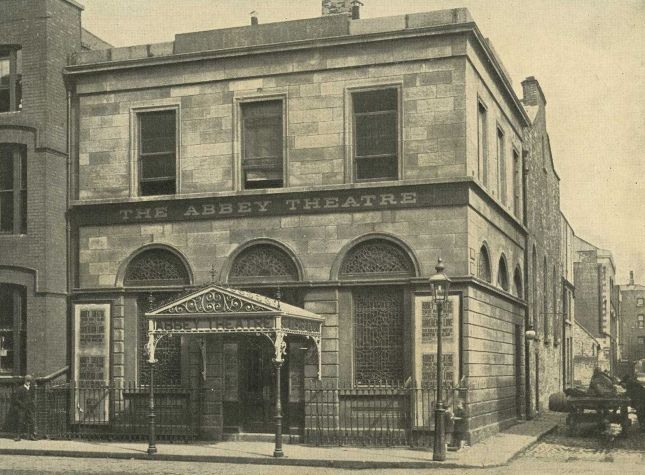As a child, I spent many hours on stage, both dancing and acting. At one point in my life, I even aspired to be a Broadway actress. So, needless to say that when I heard that our class was attending a production at the historic Abbey Theatre, I was thrilled! I had never passed by, but have heard many things about the Abbey Theatre, mostly about the quality of the productions that have been put on there.
When I arrived, I was underwhelmed to say the least. I knew that the theatre was over 100 years old, so I was quite disappointed to walk up to a modern looking, beige box that was made out of concrete. The building is so non-descript that I could have easily walked by without noticing it. After conducting some research, I found that the original Abbey Theatre was destroyed in a fire in 1955. The theatre that I visited was rebuilt as the Abbey Theatre in 1966, and until that time was known as the Queen’s Theatre.

Photo of the original Abbey Theatre – courtesy of http://www.abbeytheatre.ie/behind_the_scenes/article/history/

The Abbey Theatre as it exists today.
The interior of the theatre was nothing to be impressed by either. It is just a plain lobby, with red carpeting and white walls, that contains a concession stand. It reminded me of the Wilma Theater in Philadelphia, where I have attended many productions. I had initially expected grandiose decorations, but now that I know this theater is more modern, I am not surprised by the style of the furnishings. The Abbey contains two stages, with the larger being more ornate than the smaller one. The larger of the two is much more impressive architecturally, and contains a balcony. The smaller is pretty bare bones, with a plain stage and one level of seating.
While I thought Shush, the show that we saw, was excellent, I was still disappointed by the Abbey Theatre. I wish that I was able to somehow see the original Abbey Theatre, not only because of the beautiful architecture, but also so that I would be able to stand in a place that was the creation of W.B. Yeats, one of the most celebrated authors and playwrights in Ireland. To me, the original Abbey Theatre represents old Dublin, and great writers of the past. Like many other beautiful buildings in Ireland, it exists now only in historical documents and the memory of older Dubliners.
